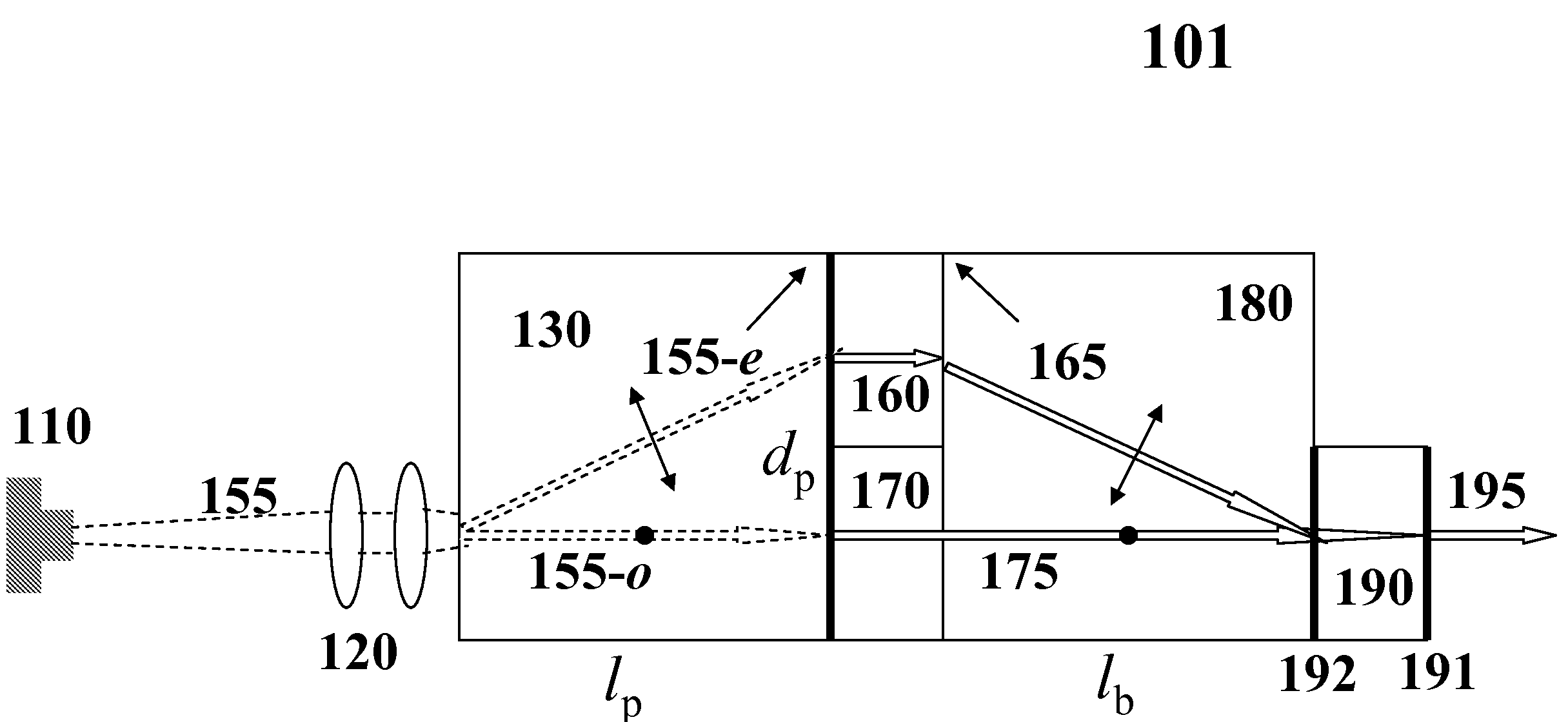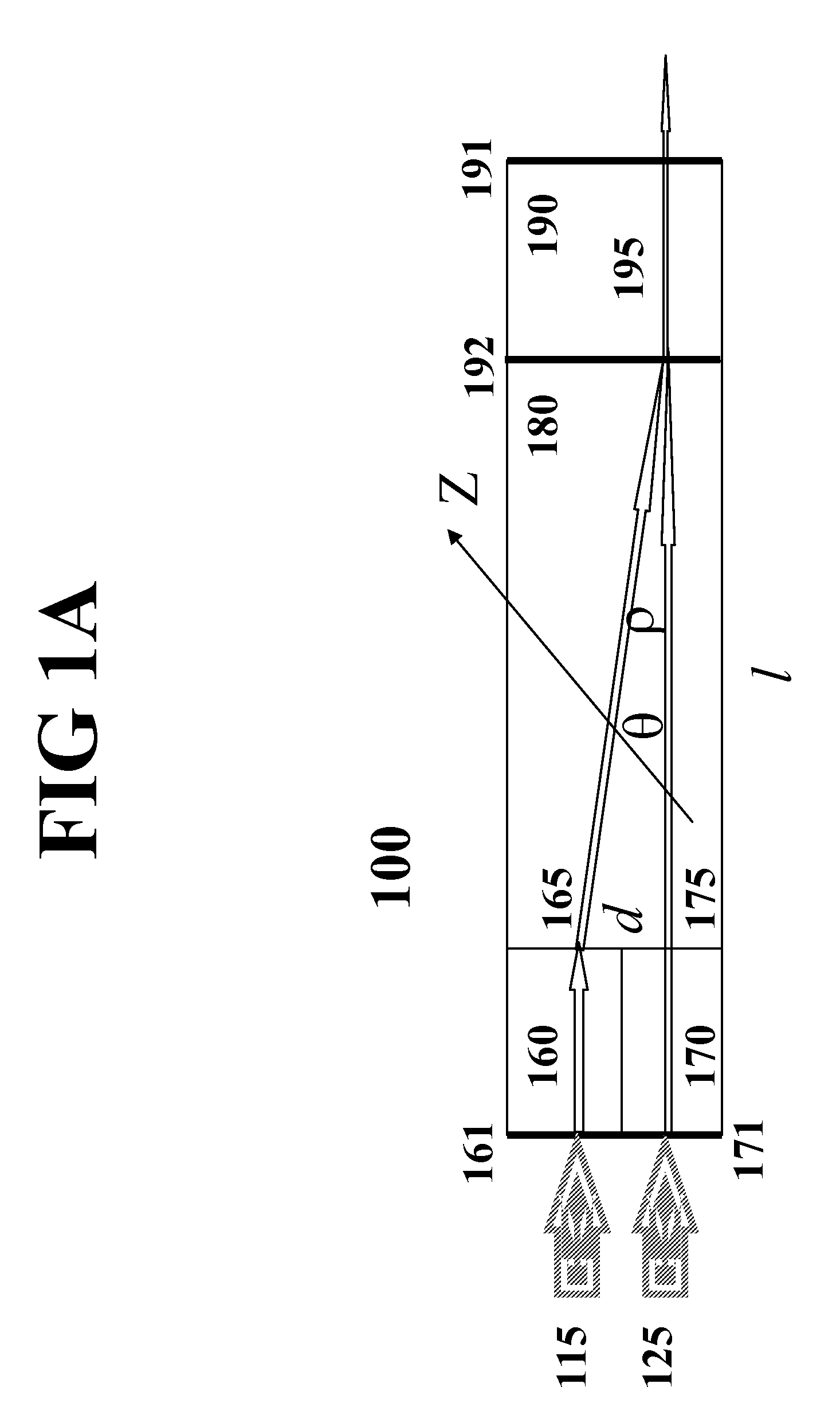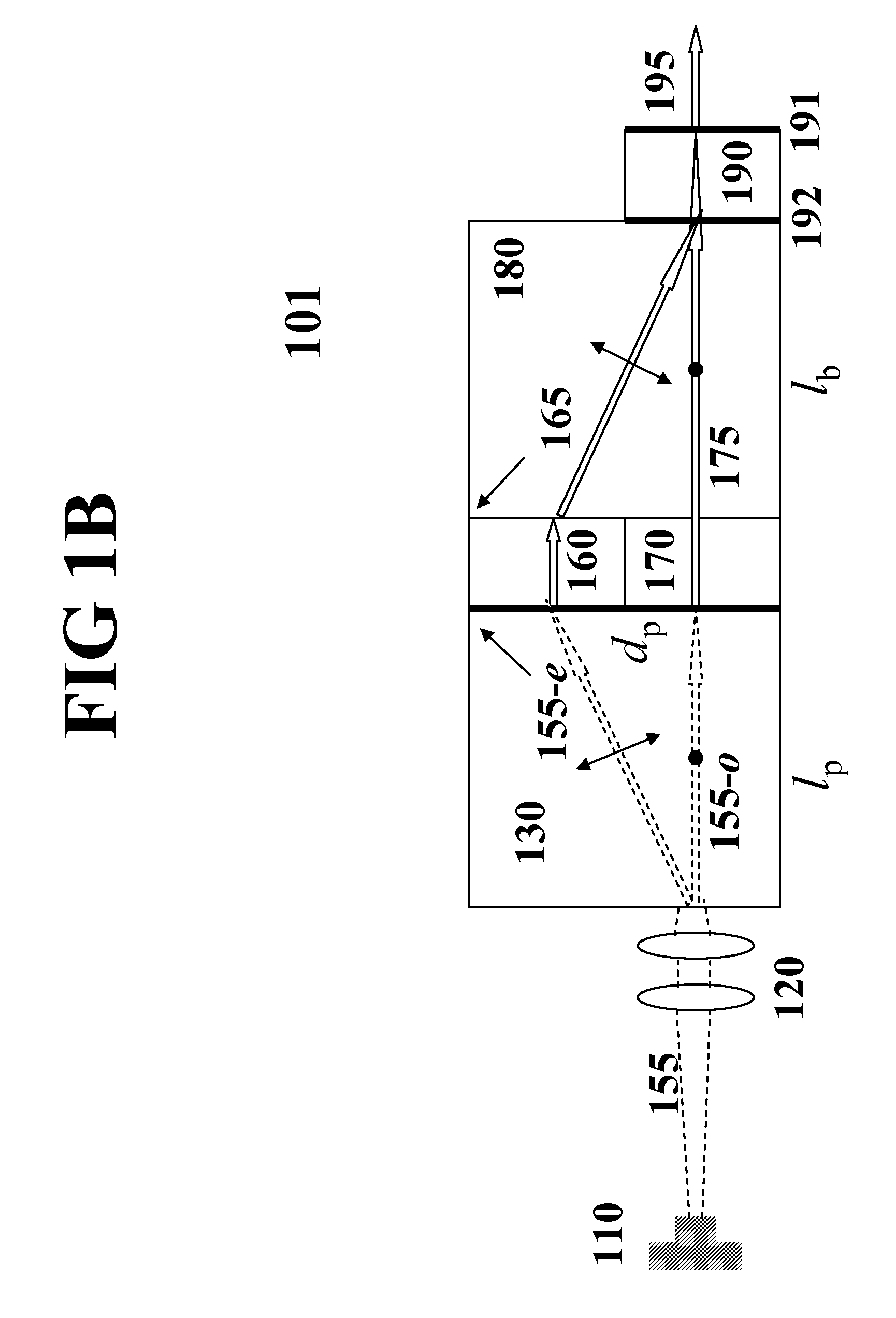Low speckle noise monolithic microchip RGB lasers
- Summary
- Abstract
- Description
- Claims
- Application Information
AI Technical Summary
Benefits of technology
Problems solved by technology
Method used
Image
Examples
Embodiment Construction
[0040]Referring now to the drawings and in particular to FIG 1A, wherein a first preferred embodiment of the monolithic microchip laser constructed according to the present invention is shown in a schematic form. The monolithic microchip laser 100 comprises pumping lights 115 and 125, laser gain media 160 and 170, a birefringent crystal 180, and a nonlinear optical crystal 190 for sum frequency mixing. These crystals are optically bonded each other. With this monolithic architecture, the intrinsic passive cavity loss is minimized, while the thermal and mechanical stabilities of the cavity are improved.
[0041]For high-efficiency and low-noise operation, the birefringent crystal 180 should be transparent to the fundamental wavelengths, normally in the IR region. Preferably, the birefringent crystal 180 is short in length and has a high birefringence, i.e., wide differences between the refractive indexes of ordinary (o-) and extraordinary (e-) rays. One example of the crystals with thes...
PUM
 Login to View More
Login to View More Abstract
Description
Claims
Application Information
 Login to View More
Login to View More - R&D
- Intellectual Property
- Life Sciences
- Materials
- Tech Scout
- Unparalleled Data Quality
- Higher Quality Content
- 60% Fewer Hallucinations
Browse by: Latest US Patents, China's latest patents, Technical Efficacy Thesaurus, Application Domain, Technology Topic, Popular Technical Reports.
© 2025 PatSnap. All rights reserved.Legal|Privacy policy|Modern Slavery Act Transparency Statement|Sitemap|About US| Contact US: help@patsnap.com



